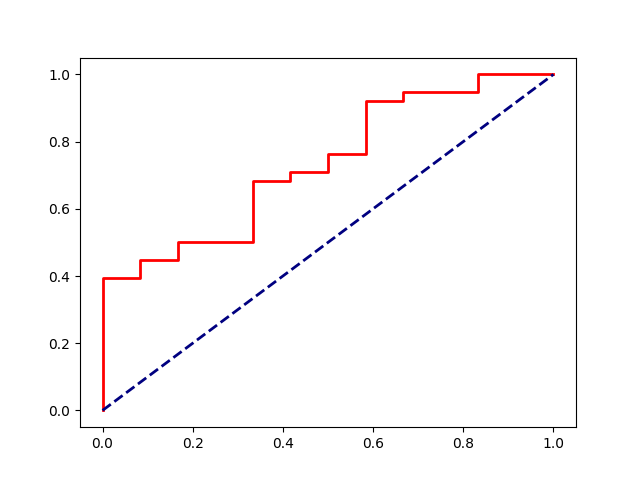Note
Go to the end to download the full example code
ROC¶
An exemple on ROC curve.
Data
from sklearn import datasets
iris = datasets.load_iris()
X = iris.data[:, :2]
y = iris.target
from sklearn.model_selection import train_test_split
X_train, X_test, y_train, y_test = train_test_split(X, y, test_size=0.33)
from sklearn.linear_model import LogisticRegression
clf = LogisticRegression()
clf.fit(X_train, y_train)
import numpy
ypred = clf.predict(X_test)
yprob = clf.predict_proba(X_test)
score = numpy.array(list(yprob[i, ypred[i]] for i in range(len(ypred))))
data = numpy.zeros((len(ypred), 2))
data[:, 0] = score.ravel()
data[ypred == y_test, 1] = 1
data[:5]
array([[0.53781077, 1. ],
[0.71038639, 1. ],
[0.958238 , 1. ],
[0.72766728, 1. ],
[0.6519351 , 1. ]])
ROC - TPR / FPR
TPR = True Positive Rate
FPR = False Positive Rate
You can see as TPR the distribution function of a score for a positive example and the FPR the same for a negative example.
from sklearn import metrics
import matplotlib.pyplot as plt
dec = ypred == y_test
ans = numpy.zeros(len(dec))
ans[dec] = 1
fpr, tpr, thresholds = metrics.roc_curve(ans, score)
plt.figure()
plt.plot(fpr, tpr, lw=2, label='ROC curve', color="red")
plt.plot([0, 1], [0, 1], color='navy', lw=2, linestyle='--')
plt.show()

End¶
Nothing below.
Total running time of the script: ( 0 minutes 3.550 seconds)
